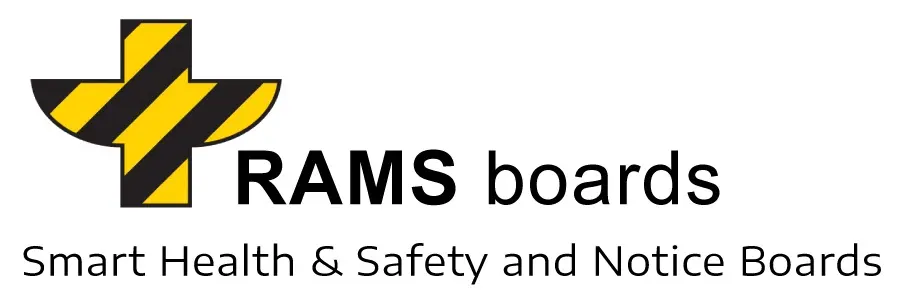RAMS boards play a vital role in supporting on-site communication and coordination at construction sites, addressing several key aspects of effective workplace communication. Their design and functionality make them an essential tool in streamlining interactions and ensuring that everyone on-site is well-informed and synchronized in their activities.
- Centralized Information Hub: RAMS boards serve as a central location for displaying all critical information. This centralized approach is crucial in a dynamic construction environment, where up-to-date communication is essential. Information such as work schedules, safety protocols, project updates, and team assignments can be prominently displayed, ensuring that everyone has access to the same set of information.
- Enhanced Visibility for Important Notices: Due to their design and strategic placement, RAMS boards are highly visible. This ensures that any important notices, updates, or instructions catch the attention of workers and staff. The visibility of these boards is key in making sure that critical communications are not missed.
- Facilitation of Safety Communication: RAMS boards are instrumental in communicating safety-related information. This includes hazard alerts, emergency procedures, safety meeting schedules, and updates on safety regulations. By centralizing this information, RAMS boards help in maintaining a consistent and high level of safety awareness among all workers.
- Customizable for Site-Specific Needs: The ability to customize RAMS boards for specific site requirements means that they can address the unique communication and coordination needs of each project. Whether it’s specific safety warnings, operational changes, or site-specific guidelines, the information can be tailored to be most relevant to the workers on that particular site.
- Support for Multilingual Communication: In the diverse workforce of construction sites, RAMS boards can support multilingual communication, ensuring that workers who speak different languages have access to crucial information in a language they understand. This inclusivity is important for effective communication and coordination among all workers.
- Role in Emergency Communication: In case of emergencies, RAMS boards become critical communication tools. They can be used to display emergency contacts, assembly points, and specific emergency procedures, ensuring a swift and organized response in crisis situations.
- Tool for Organizational Announcements and Updates: Beyond safety and operational information, RAMS boards can be used for general organizational announcements, updates, or acknowledgments. This could include information about upcoming events, policy changes, or recognitions of team achievements, contributing to a well-informed and engaged workforce.
- Interactive Communication: Some RAMS boards setups allow for interactive communication, where workers can post questions, feedback, or safety observations. This interactive aspect can foster a more engaged and collaborative environment, where communication is a two-way process.
- Durable and Reliable in Different Conditions: The construction of RAMS boards, being durable and weather-resistant, ensures that they remain functional and visible in various environmental conditions. This reliability is crucial for continuous and effective communication on construction sites.
In summary, RAMS boards support on-site communication and coordination by serving as a centralized information hub, enhancing the visibility of important notices, facilitating safety communication, being customizable for site-specific needs, supporting multilingual communication, playing a crucial role in emergency communication, serving as a tool for organizational announcements, enabling interactive communication, and being durable and reliable under different conditions. These attributes collectively improve the flow of information, enhance coordination of activities, and contribute to a more efficient and safe construction site.
